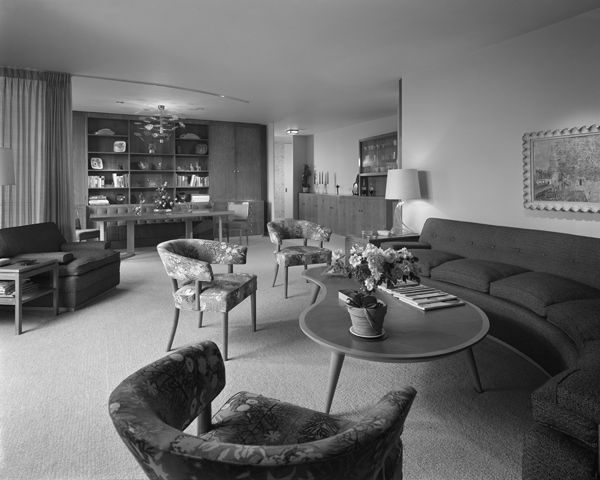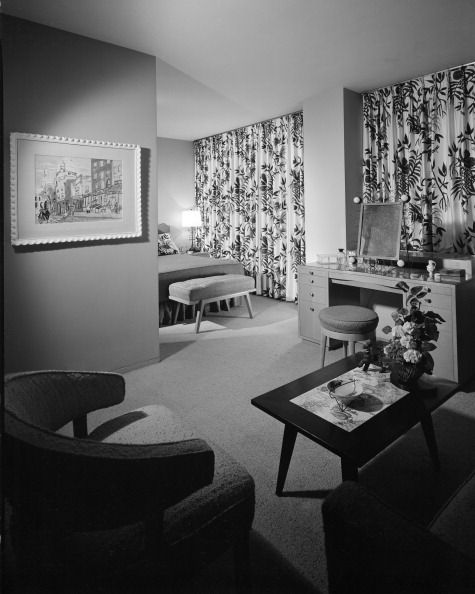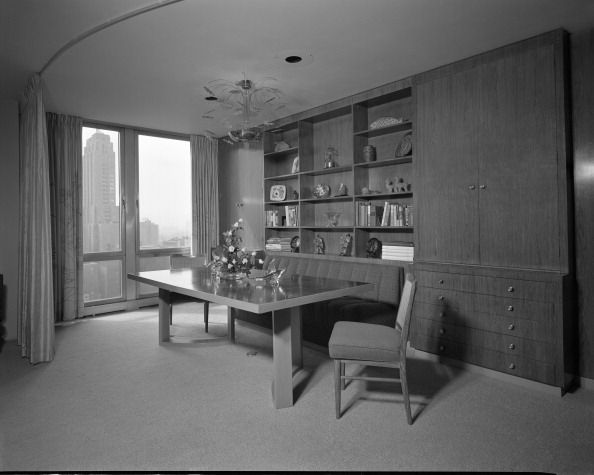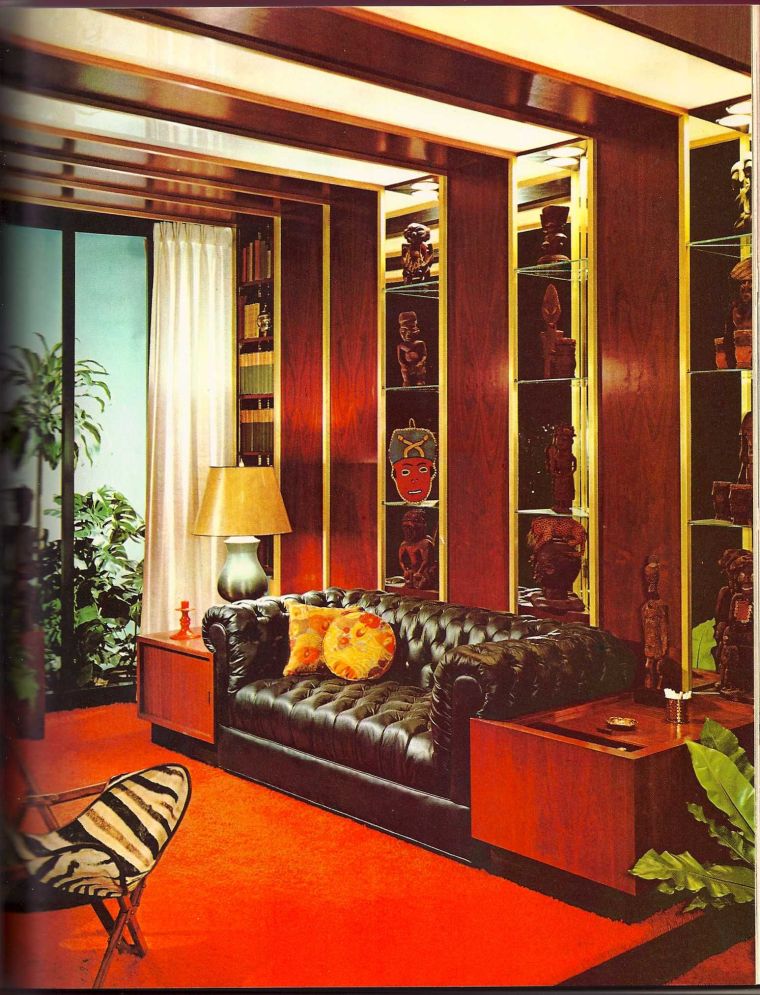
If you stopped by today to visit the culinary world of Dahomey, you are in for a little switch. Due to the inability to source all of the African country’s recipe ingredients in time for this week’s post, Dahomey will be postponed until next week.
In its place, we will be traveling to Denmark today as Week 13 of the International Vintage Recipe Tour 2020 continues. This little obstacle in the schedule turned out to be nicely fortuitous – as it is Easter weekend and thanks to Denmark, we will be making a homemade condiment that often appears at the Easter dinner table – especially if you are serving ham for the holiday.
In today’s post, we will be making homemade mustard with nothing more than a handful of common pantry staples. It takes five minutes to make, and after a quick rest in the fridge, it’s ready to enjoy. We will also be discussing the rise in popularity of the design aesthetic that made Denmark famous around the world – Danish Modern – and how one man’s ideology in the 1920’s turned it into a universal trend in the 1950’s.

Most vintage aficionados will be familiar with the modular, natural wood look of classic mid-century furniture. It’s been a popular choice in kitchen and dining room decor for the past 20 years thanks to stylish modern yet retro television shows like MadMen, who glamorously showcased its minimalist appeal. But you may be surprised to learn that the Danish Modern aesthetic actually began long before the 1950’s. Thirty years prior to that, it started taking root in the mind of this guy…

… Kaare Klint. A Copenhagen born architect, Kaare was in search of something different than the Bauhaus style that dominated the trendy furniture marketplace in the 1920’s and 1930’s.

Bauhaus furniture, with its nod towards industrialization and the sleek style of steel and metal components, was pretty to look at it but it wasn’t very functional and it wasn’t very comfortable. Similar to avant garde clothing that makes it way down the runway at fashion shows, Bauhaus was eye catching, stylish, stimulating and conversation worthy but when it came to practicality in everyday real-life, it wasn’t very accommodating. Kaare, taking note of these Bauhaus shortcomings, approached furniture design in a different way.

Using his architectural mindset, Kaare’s concept was to design pieces that had simple lines that were thoughtfully engineered for comfort first and form second. He threw the words honest and beautiful and democratic around, but ultimately, what he really wanted to do was to make furniture that had palpable integrity. This was a novel idea. Up until Bauhaus and Kaare Klint decided to change things up, furniture had been pretty traditional. Variations of the same style, fabrics, materials, and shapes had stayed relatively the same for centuries. A chair was a chair was a chair in regards to shape, size and comfort. But when Bauhaus and then Danish Modern came along, things changed.

By studying the size, shape and form of the human body, Kaare came up with a series of furniture designs that turned out to be both remarkably beautiful and remarkably comfortable. Utilizing neutral colors, natural materials and warm shades of wood, Kaare designed the antithesis of the cold, metallic style of the Bauhaus movement. He made furniture that fit. Comfortably.

Embracing the skill and tradition of local Danish cabinetmakers, Kaare combined architectural sensibility with artisan craftsmanship. These cabinetmakers were trained in the centuries old techniques of traditional woodworking that had been passed down to them through generations. Highly skilled at their craft, they were true artisans who proudly and carefully produced pieces of furniture by hand, with the intention that their pieces would be built to last a lifetime. Kaare appreciated that level of detail and devotion and aspired to reproduce the same attributes in his furniture designs.

As the collaboration between Kaare and his cabinetmakers took shape, this new style of design began to develop. Kaare, confident in the end result that was produced, taught his philosophies in design classes, inspiring students to think architecturally about functional furniture. Eventually a tribe of architects, designers and cabinetmakers all worked in the same vein together utilizing Kaare’s concepts. Before long, the art councils in Denmark began promoting this remarkable style of furniture, describing it as a Danish handicraft, something that celebrated the unique cultural landscape of Denmark.

With a style defined by simplicity, comfort, quality, warmth, and beauty, it wasn’t long after the Danish art councils started promoting this aesthetic that interior design journals and magazines began taking notice. Coined Danish Modern, industry writers and promoters began exalting the attributes of this natural, symbiotic relationship between form and function.

As awareness grew, Danish Modern began to attract a certain type of enthusiast from countries beyond Denmark. In particular in the United States, it became very popular in the 1940’s and 1950’s with young, urban intellectuals in the middle to upper class bracket. These enthusiasts lived in the major market cities of New York, Los Angeles, Chicago and San Francisco. They appreciated a fresh perspective, admired unique artistry, and favored outside of the box thinking. As a culturally savvy group, they believed in the beauty of fine art and looked for ways to incorporate it in their daily lives in thought-provoking ways. They filled their spaces, not with factory mass produced furniture, but with one-off pieces that made a statement about their personal taste and their artistic temperament.

Danish Modern furniture offered more than a comfortable recline – it offered a lifestyle choice that showcased honesty, purity and naturalism, all qualities of the 1950’s culture that Americans aspired to.


During the 1960’s other furniture companies took note of the rise in popularity of Danish Modern and started reproducing their own versions. But these replica pieces were not of the same quality in construction as the originals. These were mass produced pieces designed to sell fast for the trendy buyer market. They were made by unskilled factory workers on assembly lines, not by mastered hands in Danish workshops.

Traditional Danish designers and cabinet makers acknowledged these knockoffs but were uncertain how to evolve past the competition. Even though the knock-offs were inferior products, they ultimately became the downfall of the original Danish Modern marketplace. The Danish cabinet makers knew only their skill. The Danish designers and the Danish architects knew only the style they had created. None could see what the future of Danish Modern looked like past what was already being designed in the same similar vein. There were no new concepts waiting in the wings of the Danish Modern style post 1960’s.
By the 1970’s, the market had become saturated with knock-offs, covering over the original handcrafted beauties that had been built in Denmark. These knockoffs became to too familiar, too commonplace and too accessible in the furniture market which muddied the playing field. Value was placed in the fast selling of the pieces rather than the appreciation of the fine art form. As with most trends, consumer tastes changed in the modern furniture buyer of the 1970’s. They were no longer interested in furniture that was meant to last a lifetime. They liked the freedom of being able to redecorate every few years, and of not being tied down to one type of design aesthetic. By then, the Danish Modern style was viewed as outdated. Consumers wanted color and bold shapes. They wanted eclectic designs and chaotic patterns. They wanted glass and laminate and plastic and mirrors. They wanted post-modern and pop culture and furniture that spoke of the disco era. Essentially, they wanted everything that Danish Modern was not.

It wouldn’t be until the early 2000’s that Danish Modern and the original philosophies behind it would come to be appreciated again. Just like those early fans in the 1950’s, consumers in the 2000’s were searching for the well built, the hand crafted, the artistic. They were searching for the thoughtful story and the artisan eye. They were searching for designers like Kaare Klint and the school of artists that grew up around him. Suddenly Danish Modern bloomed again. And just like in the 1960’s and 1970’s so did the knock-offs. Now the midcentury market is bubbling over again, saturating so many interiors we barely notice it anymore. These days there is definitely rumbling in the design world that midcentury is on its way out again and that something completely new is starting to take hold. Many say it is the return to the femininity and florals of the 1980’s but with a stronger, bolder, darker, more modern edge. Consumers today are looking for something beyond the grey, marble, industrial minimalism that has dominated the interior design world for almost twenty years. Burgeoning trends point towards the use of color and eclectic collections once again. It’s the emergence of an aesthetic that has yet to be completely defined, but, if history tells us anything, it’s that somewhere there’s a Kaare Klint type designer just waiting to reveal something new and something remarkable.
While we wait to see what unfolds in the furniture design department in this new decade, we’ll make some mustard, Danish style. Like the furniture, this is a recipe that has integrity and simplicity. It involves seven ingredients and one bowl. It makes one cup and lasts in the fridge for weeks. It has spicy, sweet flavor and tons of possibilities when it comes to pairings. If a mustard recipe could be equated to a well built chair – it would be this one.

Danish Mustard
(Makes 1 Cup)
1/2 cup dry mustard
7 tablespoons granulated sugar
1/4 cup boiling water
3 tablespoons vegetable oil
2 teaspoons Worcestershire sauce
1/4 teaspoon salt
1/2 teaspoon cider vinegar
Combine the mustard and sugar in a bowl. Beat in the boiling water to make a paste. Beat in the remaining ingredients. Let cool and refrigerate.
Because this has a honey mustard type taste to it, it would be excellent served with ham, or dolloped on top of a soft mellow cheese like goat or brie, or slathered on sandwiches of chicken and lettuce. Really though you can enjoy it in any type of situation that calls for mustard. Like any homemade condiment, this is a wonderful and delicious and surprising alternative to store-bought mustard and contains only natural ingredients without any added preservatives. Just like a good horseradish, it packs a little punch in the back of your throat and tickles your nose.
Cheers to natural products, whether they be furniture or foods:) Hope this weekend that your feasts are full of flavor and your baskets plentiful. Happy Easter!
Join us next week, as we circle back around to Dahomey for week 14 of the International Vintage Recipe Tour 2020.








I don’t comment often, though I always follow your blog (which I love) and your Instagram as well. Thanks for the mustard recipe. It is a bit different from the one I have used, simpler I think, and I’m definitely going to try it. Just want to say the I adore all that is mid-century, and particularly danish modern. Love the pictures.
Thanks for your great blog…
Gwen
LikeLike
Thanks so much Gwen! It is always love to hear from you. I’m glad you enjoy the posts! Yes, this definitely is not your typical yellow mustard like French’s or Grey Poupon. My dad used to bring Danish mustard home from his business trips when I was growing up. It became such a prized treasure in our house we’d pull it out on special occasions:) It’s darker in color, sweeter and a little bit spicer which makes it so good on salty meats or a savory sandwich. You have to let us know what you think once you make it!
LikeLiked by 1 person
I will!
LikeLiked by 1 person